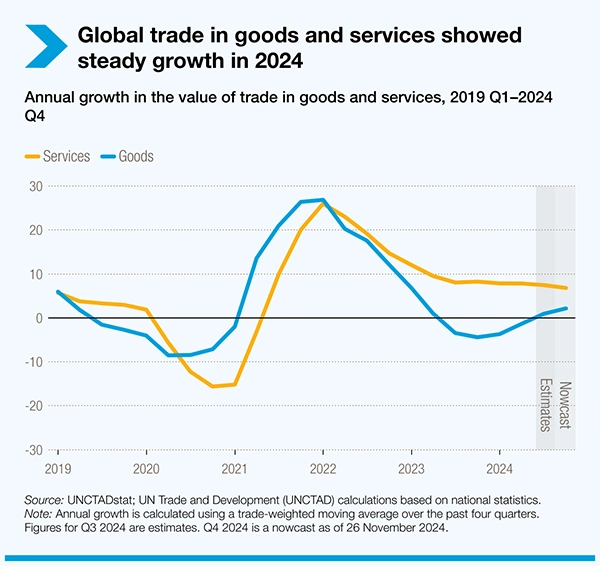The UN Trade and Development report states that in 2024, global trade is going to hit a record $33 trillion (UNCTAD). With this huge pool of opportunities in the ocean, even one percent of this total revenue can significantly boost your business developments and operations.

As the business of both imports and exports is flourishing and provides hefty profitable opportunities, it also has various challenges. For instance, currency fluctuations, finding buyers, supply chain concerns, etc.
Luckily, you can join me in this article till the end as I share some effective strategies with you to enhance your import and export business.
Understanding and navigating regulatory frameworks is necessary for businesses to optimize their import and export operations. Various countries have specific rules, tariffs, and customs procedures that must be followed to avoid penalties, delays, or the seizing of goods.
For businesses, adhering to compliance with international trade laws is not just about avoiding issues—it’s about creating opportunities for smoother, faster movement of goods.
A main area to focus on for successful operations involves maintaining trade compliance. This ensures that goods are transported in alignment with all the legalities while avoiding costly disruptions. Companies must stay informed about shifting regulations, especially in regions with complex trade agreements.
Leveraging customs brokers or compliance software can help streamline these processes, reducing human error and expediting document management. Compliance training for staff is also beneficial, equipping teams with the knowledge needed to navigate complex international trade laws confidently.
Clear documentation is also something that helps in supporting further efficiency. The following are some factors that contribute to faster custom clearance:
When companies focus on these factors, they can minimize delays and improve customer satisfaction while maintaining lawful operations.
Modern technology is one of the primary contributors to improving import and export efficiency. Luckily, automated solutions are now in:
Automating these tasks has helped in eliminating manual tasks, human error, and time delays. It brings some exciting benefits such as improved accuracy, speed, and transparency.
For example, digital platforms provide real-time tracking of shipments, giving businesses and clients greater visibility throughout the transportation process. Advanced tracking systems identify bottlenecks early, enabling organizations to take proactive measures and minimize delays. Supply chain management tools also allow for seamless coordination between manufacturers, suppliers, and logistics providers, ensuring goods flow efficiently from origin to destination.
Artificial intelligence (AI) further improves trade operations by predicting potential disruptions, such as adverse weather conditions, geopolitical events, or shipping delays. These AI-driven insights enable companies to make data-informed decisions that maintain supply chain efficiency. Integrating blockchain technology can also optimize trade documentation processes by securely digitizing and automating contracts, invoices, and compliance data, further reducing administrative burdens.
In order to make the whole supply chain effective and efficient, the import and export operations have to stay organized. Here’s how it is done:
Apart from these two focus points, establishing strong relationships with reliable suppliers and logistics partners is equally valuable for organizations. I would highly recommend that your company should vet their partners for their ability to meet deadlines, handle unforeseen challenges, and maintain quality.
DID YOU KNOW?
Fluctuating fuel costs leave their effect on freight rates, profit margins, capacity, charter rates, etc.
By partnering with reputable carriers and freight forwarders, businesses can improve delivery reliability and avoid costly delays caused by inexperienced or inefficient providers.
The final shipping cost for your package is determined by various factors. Since your business must deal with tons of packages, a small optimization in planning can have a huge positive impact on the shipping cost. The following are some of those strategies:
Along with these, there are various factors that can help you in reducing costs overall.
Managing Trade Risks and Uncertainties
International trade involves risks like fluctuating currency rates, political instability, and natural disasters. In this scenario, effective risk management strategies come into play for businesses looking to enhance import and export efficiency.
For your enterprise, you can start by managing trade risks by securing proper insurance coverage. Cargo insurance protects businesses against financial losses caused by damaged, lost, or delayed shipments. You should also consider credit insurance to safeguard against non-payment by buyers, especially when exporting to regions with economic volatility.
As an updated enterprise, take a keen observation of exchange rates and consider hedging strategies to protect against currency fluctuations that can impact profitability. Collaborating with financial institutions that specialize in international trade can provide tailored solutions for managing currency risks effectively.
Finally, enhancing import and export efficiency requires a strategic approach that combines regulatory awareness, technology integration, supply chain optimization, and proactive risk management. Your enterprise must focus on the processes and adopt modern solutions to minimize delays, reduce costs, and remain competitive in today’s dynamic global marketplace.
Apart from that, if you find my article helpful, consider sharing it with your team as well.
